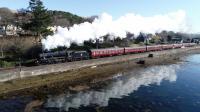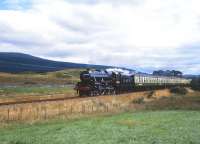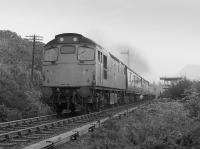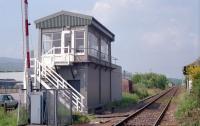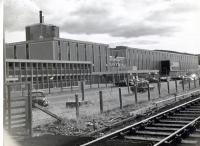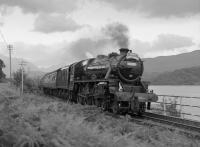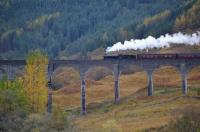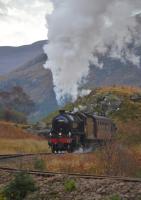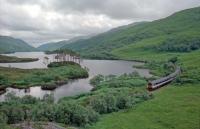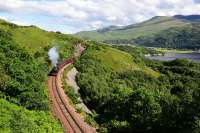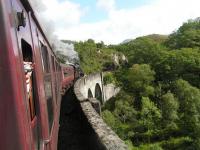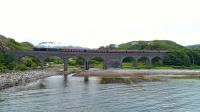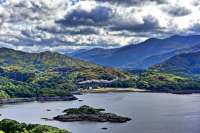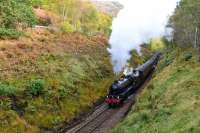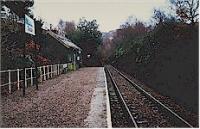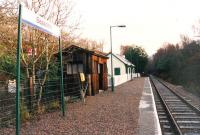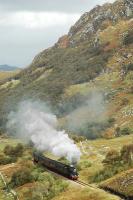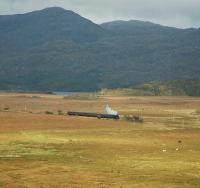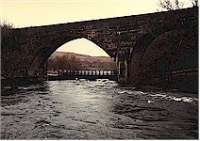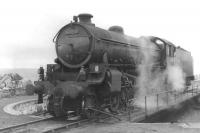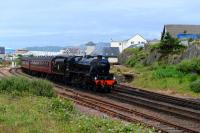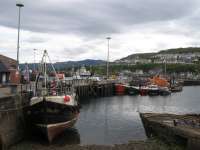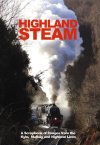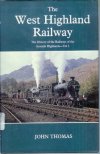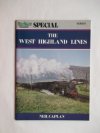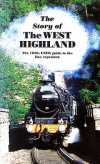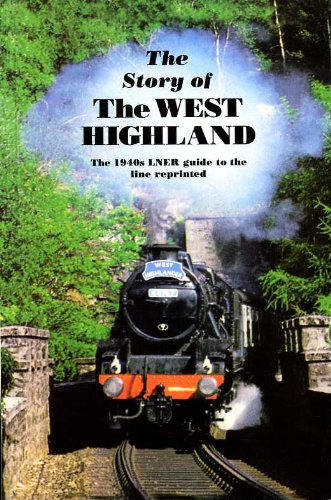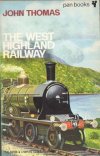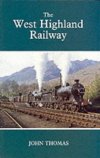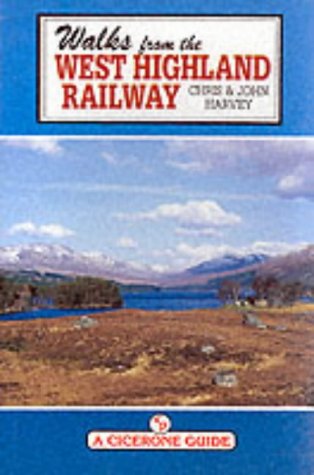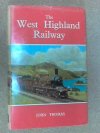Mallaig Extension (West Highland Railway)
Introduction
This 40 mile long railway line runs through some of the most scenic terrain crossed by a railway in Britain, running by the sea, inland lochs and skirting mountains. The landscape is so challenging to a railway's construction there are 11 tunnels and 6 viaducts, (the former lined with and latter notably built in concrete). It extended the West Highland Railway, which terminated by Loch Linnhe (with a branch to Banavie [1st] by the Caledonian Canal), west to the western seaboard, terminating Mallaig which flourished as a fishing port also served by steamers. It was, and is, an area of low population. The railway carries a passenger service between Fort William and Mallaig. Caledonian MacBrayne ferries operate out of Mallaig to Armadale Pier on Skye. Other destinations are also served by ferries and the harbour is a fishing port. For much of the year the line is traversed by the steam hauled 'The Jacobite '. Charles Edward Stuart's Jacobite standard was raised at Glenfinnan where today the Glenfinnan Monument and visitors' centre is located. Nearby is the 21 arch Glenfinnan Viaduct made famous by the Harry Potter films. Glenfinnan station has a railway museum, which can be visited briefly during the pause in the journey of the westbound 'Jacobite'. The line is supported by the Friends of the West Highland Lines who were formed in 1983 and have promoted the line ever since. The society publishes the West Highland News Plus. The line is single track with passing places at Glenfinnan and Arisaig. Engineers: Simpson and Wilson.
Why built
This line extended the West Highland Railway to the open waters of the West Coast, allowing the small fishing station of Mallaig to become a fishing port of note handling considerable quantities of herring. The terminus at Fort William was on Loch Linnhe, but it was a long distance from the western seaboard. In addition to being a fishing port, from Mallaig the Isle of Skye could be reached and its cattle. For tourism it opened up a new area with beautiful views and steeped in history.
Architecture
Station buildings on the extension were similar to, but smaller than, those on the original West Highland Railway. Concrete was used in their construction. Buildings survive at Corpach (not typical - the orginal building burned down), Glenfinnan, Beasdale (different in style), Arisaig, Morar and Mallaig. Platforms also were built in concrete. Unlike the original line no stations had an island platform. Glenfinnan, Lochailort and Arisaig had two platforms but no footbridges, just sleeper crossings at the end of the platforms (which can prove tricky in the summer when the Jacobite is running it being so long it covers the crossings!). The Mallaig terminus had a long glazed canopy covering the portion of the platform closest to the building, that being a two storey stone built cottage style. The now lost single road engine shed at Mallaig was also stone built.
Signal boxes, built in timber, were designed and supplied by the Railway Signal Company; a larger form of those found on the West Highland Railway main line. Examples survive at Glenfinnan (restored) and Arisaig. Small gate boxes were at Corpach and Morar.
There were no goods sheds as such, but where needed there were grounded coaches, later replaced by parcel buildings, on the platform.
Station agent and railway staff houses are similar to those on the main line, with surfacemen's cottages at regular intervals along the line.
A modern signal box style control centre was erected at Banavie to take over from the traditional signalling with the introduction of RETB.
Dates
| 31/07/1894 | West Highland Railway
Mallaig Extension (West Highland Railway) West Highland Railway (Mallaig Extension) Act passed. |
| / /1896 | West Highland Railway
Mallaig Extension (West Highland Railway) West Highland Railway (Guarantee) Act passed, setting up the guarantee for the Mallaig extension. A second West Highland Railway Act then passed, specifying completion to Mallaig by 31/07/1902. |
| 21/01/1897 | West Highland Railway
Mallaig Extension (West Highland Railway) First sod of Mallaig Extension (West Highland Railway) cut at Corpach by Lady Margaret Cameron of Lochiel. |
| 08/12/1897 | Mallaig Extension (West Highland Railway) In poor weather, the SS Clansman [II] arrived at Mallaig carrying 2,200 navvies for the railway's construction. (Some possibly ex of the Kyle of Lochalsh Extension, opened 11/1897). |
| 30/03/1901 | West Highland Railway Mallaig Extension (West Highland Railway) Banavie Junction [2nd], Banavie Canal Bridge, Tomonie Signal Box, Glenfinnan, Lochailort, Arisaig, Mallaig signal boxes opened. Banavie Junction [1st] signal box and junction renamed Mallaig Junction. |
| 01/04/1901 | Mallaig Extension (West Highland Railway) Line opened from Banavie (Banavie Junction [2nd]), over the Caledonian Canal and on through Banavie, Corpach, Locheilside, Glenfinnan, Lochailort, Beasdale, Arisaig and Morar to Mallaig, extending the West Highland Railway to the western seaboard. There was no official opening ceremony. |
| / /1905 | Loch Leven Water and Electric Power Co Construction of Blackwater Dam, pipeline and hydro-electric power station alongside Kinlochleven Aluminium Smelter begins. Contractor Robert McAlpine whose company had not long previously completed the Mallaig Extension (West Highland Railway). |
| 31/12/1908 | North British Railway
West Highland Railway
Mallaig Extension (West Highland Railway) North British Railway formally takes over the West Highland Railway line from Craigendoran to Fort William [1st], Mallaig and the branch to Banavie [1st]. |
| / /1912 | Mallaig Extension (West Highland Railway) Tomonie Signal Box closes and Banavie Swing Bridge signal box becomes a block post. |
| 04/02/1912 | Mallaig Extension (West Highland Railway) Banavie signal box becomes a block post. Tomonie Signal Box closed. |
| 04/11/1921 | West Highland Railway Mallaig Extension (West Highland Railway) Banavie Junction [2nd] signal box closed, replaced by a ground frame. |
| /05/1927 | West Highland Railway Invergarry and Fort Augustus Railway Mallaig Extension (West Highland Railway) All three lines closed during gales. |
| 02/09/1939 | West Highland Railway Banavie Pier to Fort William (Banavie Junction [2nd]) closed to passengers. By closure the service was meagre - a service from Fort William [1st] on Mondays, Wednesdays and Fridays and a reverse working on Tuesday, Thursdays and Saturdays. Banavie Junction [2nd] to Mallaig Junction remains open to passengers as part of the Mallaig Extension (West Highland Railway). |
| 15/11/1942 | Mallaig Extension (West Highland Railway) Camus-na-ha Signal Box opened. |
| 06/08/1951 | West Highland Railway Banavie Pier to Fort William (Banavie Junction [2nd]) (excluded) closed to goods and completely. Banavie Junction [2nd] to Mallaig Junction remains open to passengers as part of the Mallaig Extension (West Highland Railway). |
| / /1956 | Mallaig Extension (West Highland Railway) Former 'Coronation' 'Beaver Tail' observation car introduced on trains between Fort William [1st] and Mallaig. |
| / /1961 | Mallaig Extension (West Highland Railway) Class 27s (BRCW Type 2s) introduced. |
| / /1962 | Mallaig Extension (West Highland Railway) Closed to steam. |
| / /1963 | West Highland Railway
Mallaig Extension (West Highland Railway) British Railways and Scottish Pulp (Developments) Ltd agree a 22 year plan for a new Scottish Pulp and Paper Mills to receive raw materials and dispatch paper by rail. |
| / /1963 | Mallaig Extension (West Highland Railway) The The Reshaping of British Railways (Beeching) report proposes the closure of Banavie, Locheilside and Mallaig but retaining a limited stop Fort William [1st] to Mallaig service. |
| / /1964 | Westfield to Kinglassie Line (North British Railway) Lochore and Redford Extension (North British Railway) Mallaig Extension (West Highland Railway) Unused signal box at Kinglassie Colliery moved to the Mallaig Extension (West Highland Railway) to become Annat Signal Box, for the Scottish Pulp and Paper Mills (opened in 1966). |
| 21/06/1964 | Mallaig Extension (West Highland Railway) Annat Signal Box opened, Camus-na-ha Signal Box closed. |
| / /1965 | West Highland Railway
Mallaig Extension (West Highland Railway) Fish carrying vans withdrawn. |
| / /1966 | West Highland Railway
Mallaig Extension (West Highland Railway) The Scottish Pulp and Paper Mills open at Corpach leading to a great increase in traffic for the line at a time when it is under threat. |
| 27/11/1966 | Mallaig Extension (West Highland Railway) Lochailort signal box closed. |
| / /1968 | Mallaig Extension (West Highland Railway) North British Railway A 'feeder' service is introduced from the Scottish Pulp and Paper Mills at Corpach to the Portobello Freightliner Terminal. |
| 09/06/1980 | West Highland Railway
Mallaig Extension (West Highland Railway) Final timber train leaves Crianlarich Lower for the Scottish Pulp and Paper Mills, Corpach. |
| /10/1980 | West Highland Railway
Mallaig Extension (West Highland Railway) As the Pulp Mill at Scottish Pulp and Paper Mills, Corpach, closes much traffic is lost. |
| 14/03/1982 | Mallaig Extension (West Highland Railway) Mallaig signal box becomes a ground frame only with one-engine-in-steam working. |
| / /1983 | Mallaig Extension (West Highland Railway) Re-introduction of observation cars in the summer. |
| / /1983 | Mallaig Extension (West Highland Railway) Lochailort station building demolished. |
| 13/11/1983 | Mallaig Extension (West Highland Railway) Arisaig signal box closed. |
| 29/04/1984 | Mallaig Extension (West Highland Railway) Arisaig becomes a block post again. |
| 27/05/1984 | Mallaig Extension (West Highland Railway) Steam returns to the West Highland Line as a tourist attraction. The first such train ran on Sunday the 27th of May. |
| / /1987 | Mallaig Extension (West Highland Railway) Mallaig station's screening wall, which protected passengers from the elements, removed. Mallaig Shed demolished. Both removed for road development. |
| /03/1987 | Mallaig Extension (West Highland Railway) Fish traffic briefly returned to the line between March and June, the fish from Iceland being carried south to Grimsby. |
| 07/06/1987 | Mallaig Extension (West Highland Railway) Banavie signal box reduced to swing bridge and gate box. |
| 14/06/1987 | West Highland Railway Mallaig Extension (West Highland Railway) New RETB signalling centre opened at Banavie - the first step is to take over operation of the Banavie Swing Bridge as a swing bridge and gate box. Banavie signal box closed. |
| 06/12/1987 | West Highland Railway Mallaig Extension (West Highland Railway) RETB, based at the signalling centre at Banavie, comes into operation. Takes over Glenfinnan, Arisaig. Annat Signal Box reduced to gate box. |
| 19/05/1988 | West Highland Railway Mallaig Extension (West Highland Railway) Banavie RETB Signalling Centre formally opened by David Mitchell, Minister for Transport. |
| /06/1988 | Mallaig Extension (West Highland Railway) The railway owned dormitory at Mallaig was demolished after a fire (in June). This dormitory was formerly used by staff handling the considerable fish traffic. |
| 23/01/1989 | West Highland Railway
Mallaig Extension (West Highland Railway) Class 156 'Sprinters' introduced, replacing Class 37/4 hauled rolling stock. |
| 27/06/1995 | Mallaig Extension (West Highland Railway) The West Coast Railway Company commences running the steam service on the Mallaig Extension as The Jacobite. |
| 10/02/1998 | Mallaig Extension (West Highland Railway) Part closure due to flooding. With closure of the Lochy Viaduct [Fort William] a stranded Sprinter operates between Mallaig and Loch Eil Outward Bound until the line re-opens on the 18th. |
| /05/2000 | Mallaig Extension (West Highland Railway) While erecting a community hall on the site of Mallaig Shed the foundations of the building, and some track, is found. The rail served oil tanks by the station are to be replaced by a new storage facility in the harbour. |
| 23/02/2003 | Mallaig Extension (West Highland Railway) Major lineside fire at the Glenfinnan Viaduct attributed to steam train used for filming scenes for the Harry Potter and the Prisoner of Azkaban film. |
| / /2005 | West Highland Railway
Mallaig Extension (West Highland Railway) Paper mill at the Scottish Pulp and Paper Mills closes, 135 jobs lost. |
| 14/02/2005 | Mallaig Extension (West Highland Railway) Line closed from the 14th to the 16th to allow the lining of Borrodale Tunnel to be repaired. Buses replaced trains. |
| 05/03/2005 | West Highland Railway
Mallaig Extension (West Highland Railway) Class 50s reach Mallaig on a Pathfinders tour for the first time (50031 Hood and 50049 Defiance). Arrived Fort William on the 4th, Mallaig on the 5th (having to run to Arisaig and back to pass a Sprinter due to its length before the return journey) and to Dundee from Fort William on the 6th. |
| 19/10/2007 | Mallaig Extension (West Highland Railway) Line closed temporarily to allow landslip prevention work. Re-opened on the 5th. |
| / /2012 | Mallaig Extension (West Highland Railway) Footpath between Glenfinnan station and Glenfinnan Viaduct opened. |
| / /2013 | Mallaig Extension (West Highland Railway) Annat Signal Box closed. |
| 05/05/2019 | Mallaig Extension (West Highland Railway) Footpath between Glenfinnan station and Glenfinnan Viaduct re-opened after repairs and improvements. |
Route described
The line runs generally west from Fort William. It crosses the Caledonian Canal at Banavie and follows the north bank of Loch Eil, generally level with few tight curves.
From Kinlocheil begins the climb to Glenfinnan station, the line passing through a short tunnel and crossing the curved Glenfinnan Viaduct and passing the head of Loch Shiel to reach the station. Beyond Glenfinnan is the summit of the line beyond which via several tunnels and curves it drops to the south bank of Eilt.
At the west end of the loch is a tight turn to the north and then west to reach Lochailort. There is a brief climb to reach Loch Dubh and another drop down to cross the Loch nan Uamh Viaduct by the shore at Loch nan Uamh, where Charles Edward Stuart landed.
Another climb via tunnels, many curves and through forest reaches Beasdale.
Arisaig station is perched above the village and harbour and from here the line turns north, passing by and over Keppoch Moss to reach the Morar Sands, Loch Morar and Morar station.
After another brief climb the last portion runs by the sea approaching Mallaig from the south.
Portions of line and locations
This line is divided into a number of portions.
Banavie to Mallaig
The signal box here controlled the junction between the Banavie [1st] branch (closed) and the West Highland's extension west to Mallaig (open). Both lines were single track.
...
See also
West Highland Railway

Ewan Crawford 27/04/2013
This is a single platform station. At the north end of the platform is Banavie Swing Bridge and the modern signalling centre, built in the style of a signal box. Unfortunately the West Highland extension style station building (similar to those at Glenfinnan and Arisaig) was demolished in the early 1980s. It had remained unused, after staff were withdrawn, but was ruined by vandalism.
...
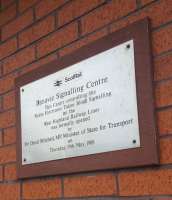
John Yellowlees 02/04/2017
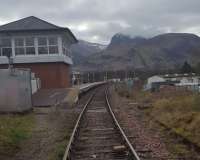
John Yellowlees 02/04/2017
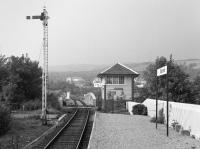
Bill Roberton //1985

John Yellowlees 02/04/2017
This single track railway swing bridge is immediately north of Banavie station. It carries the Fort William to Mallaig line at the foot of Neptune's Staircase, a series of interconnected locks on the Caledonian Canal.
...
See also
Caledonian Canal

...
Bill Roberton //1973
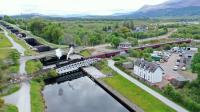
John Gray 27/05/2021
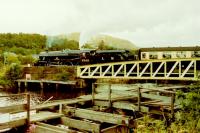
Gordon Steel 16/08/1987
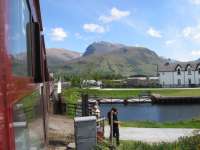
David Spaven 03/06/2016
This signal box was north west from Banavie Swing Bridge the approach to which it protected. To its west was Corpach station. It worked in conjunction with Banavie Canal Bridge Signal Box, located at Banavie station and which guarded its southern approach.
...
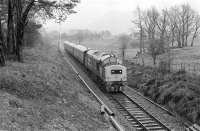
Ewan Crawford Collection 30/04/1986
This is a single platform station. It is close to the basin of the Caledonian Canal and its Corpach Basin and the sea lock. Corpach retains its small timber station building, not typical of the line (the original building, typical of the Mallaig extension, burned down). The platform is on the north side of the line and there is a barrier protected level crossing to its west.
...
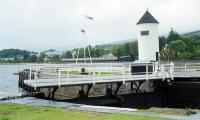
Ewan Crawford //1990
During the Second World War two loops were installed on the south side of the line in the east of Annat Point. From the loops a siding ran from the east end to serve a jetty.
...
This signal box opened in 1964, replacing that at Camus-na-ha Sidings to the west. The box controlled Annat West and Annat East level crossings and the entry into Scottish Pulp and Paper Mills which had led to its opening. It was located on the south side of the line at Annat East Level Crossing.
...
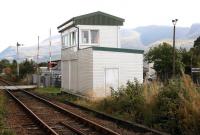
John Furnevel 01/10/2005

John Furnevel 01/10/2005
This ground frame controlled access to the Scottish Pulp and Paper Mills at Corpach from the Mallaig Extension (West Highland Railway).
...
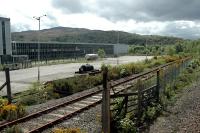
Ewan Crawford 28/05/2006
This was a Second World War loop, on the south side of the line, controlled by a signal box at its east end. The box was a single storey structure with a sloping back roof. There was a siding from the loop curving back towards Annat narrows.
...
This was a Second World War loop, on the south side of the line, controlled by a signal box at its east end. The box was a single storey structure with a sloping back roof. There was a siding from the loop curving back towards Annat narrows.
...
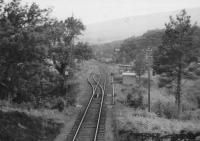
Douglas Blades Collection 05/08/1946
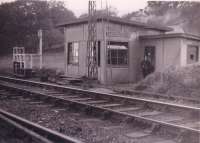
PR&PO British Railways (Douglas Blades Collection) 05/08/1946
This is a relatively modern station with a short platform built to serve the nearby Outward Bound Centre, just to the north.
...
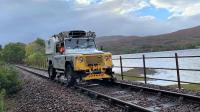
Network Rail /10/2022
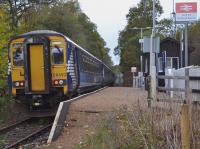
Bill Roberton 19/10/2017
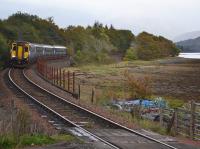
Bill Roberton 19/10/2017
This is a single platform station. It originally had a typical Mallaig Extension building such as that at Glenfinnan or Arisaig, but this has been lost (it was derelict and vandalised by the late 1960s). There is a shelter. The platform is on the north side of the line with Loch Eil just across the track.
...
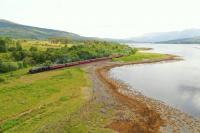
...
John Gray 08/06/2023
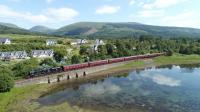
John Gray 15/07/2021
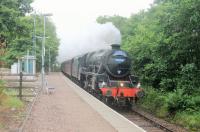
Mark Bartlett 02/08/2018
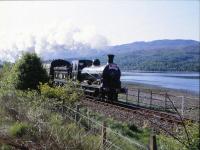
Peter Todd 28/05/1984
This single track bridge carries the Mallaig extension over the Fionn Lighe at the west end of Loch Eil.
...
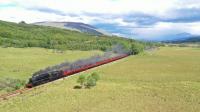
John Gray 07/06/2019
This is a single track tunnel east of the Glenfinnan Viaduct. It is 23 yards long.
...

John Gray 08/09/2022

John Gray 30/06/2021
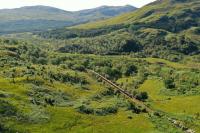
John Gray 26/08/2021
This viaduct is one of the highlights of the Mallaig Extension (West Highland Railway). It is much photographed both from the train and the surrounding land.
...
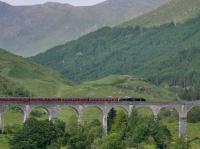
...
Bill Roberton 27/06/2021
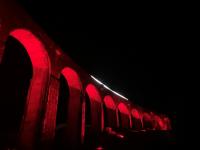
Network Rail 11/11/2020
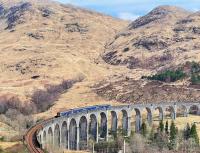
Rod Crawford 03/04/2023
Glenfinnan is one of the great railway destinations in Scotland. The station itself, nestled among mountains, is superbly preserved and has the Glenfinnan Station Museum . To the east is the world famous 21 arch Glenfinnan Viaduct (both famous in its own right and through the Harry Potter books and films) and to the south east is where [[Charles Edward ...
More details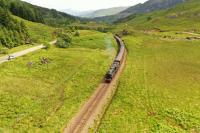
John Gray 08/06/2023
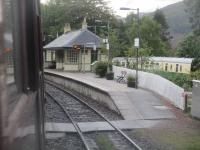
David Bosher 08/09/2022
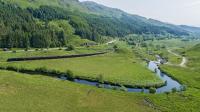
John Gray 13/06/2023
This halt was west of Glenfinnan station, east of Lochailort. It was a private halt used, initially, for shooting parties on the large Lochailort Estate. During the Second World War it was used in connection with the extensive training grounds for soldiers.
...
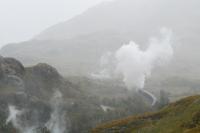
Ewan Crawford 28/09/2009
This is a single track tunnel, the eastern of two tunnels just west of Lech-a-vuie Platform and east of Loch Eilt. It is 88 yards long.
...
This is a single track tunnel, the western of two tunnels just west of Lech-a-vuie Platform and east of Loch Eilt. It is 66 yards long.
...

John Gray 15/07/2021
This is a single platform station. It was a two platform station similar to both Glenfinnan and Arisaig. It is located at Kinlochailort, now more commonly known as Lochailort due to the station. The loch, Loch Ailort, itself is to the south west.
...
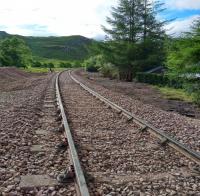
Network Rail 11/07/2020
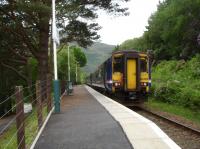
David Pesterfield 25/06/2013
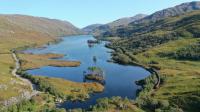
John Gray 19/09/2020
This is a single track 176 yard tunnel just west of Lochailort station.
...
This is a single track 38 yard tunnel between Lochailort and Beasdale. To the immediate west is Polnish No 107 Tunnel and to the east Lochailort Tunnel. ...
More details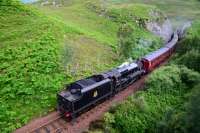
John Gray 03/08/2016
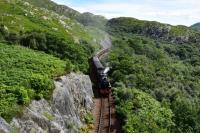
John Gray 03/08/2016
This is a single track 44 yard tunnel between Lochailort and Beasdale. To the immediate east is Polnish No 106 Tunnel and to the west Arnabol Viaduct. ...
More details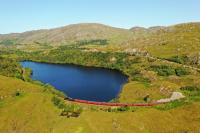
John Gray 26/08/2021
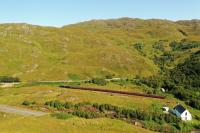
John Gray 26/08/2021
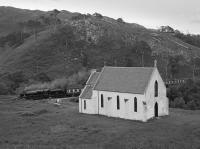
...
Bill Roberton //1984
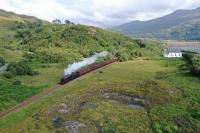
John Gray 20/08/2019
This is a six arches of 50 ft single track mass concrete viaduct on the Mallaig line between Polnish No 107 Tunnel (to the east) and Loch nan Uamh Viaduct. The viaduct is 52 ft high. The viaduct is on a gentle curve and crosses the Arnabol Burn.
...
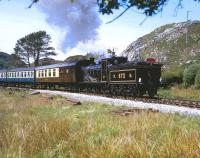
Peter Todd //
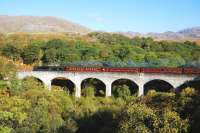
John Gray 12/10/2010
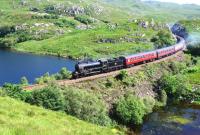
John Gray 19/07/2013
This is an eight 50ft arch single track mass concrete viaduct between Arnabol Viaduct (to the east) and Loch nan Uamh No 116 Tunnel to the immediate north of the viaduct. The viaduct is at the east end of Loch nan Uamh (loch of the caves). It is also known as Gleann Mama Viaduct, for the glen to the east.
...
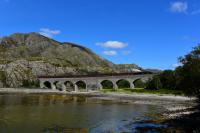
John Gray //2017
This single track tunnel of 66 yards is immediately north of the Loch nan Uamh Viaduct.
...
This single track tunnel of 99 yards is immediately north of the Loch nan Uamh No 116 Tunnel.
...
This is a single track 192 yard long tunnel. It is west of Loch nan Uamh No 117 Tunnel and just south of Beasdale No 119 Tunnel. ...
More details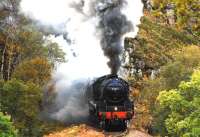
John Gray //
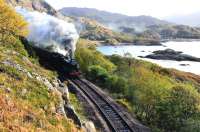
John Gray 11/10/2011
This is a single track 154 yard long tunnel. It is north of Beasdale No 118 Tunnel and east of Beasdale station. ...
More details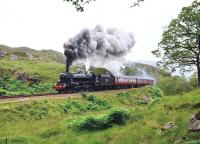
John Gray 14/07/2011
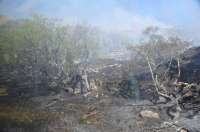
Ewan Crawford 03/05/2017
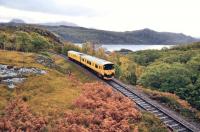
John Gray 11/10/2011
This bridge is a culvert of the Beasdale Burn located east of Beasdale station and just north of the road bridge over the A830. The burn starts in Glen Beasdale, to the east of the bridge and enters the sea on the north shore of Loch nan Uamh.
...
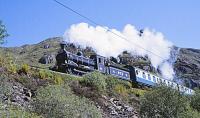
...
Peter Todd 28/05/1984
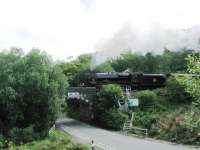
Malcolm Chattwood 26/06/2013
This is a single platform station. The building adjoining the station was both a waiting room for Arisaig House and a railwayman's house, in a style typical of such buildings on the line. The building, which was derelict in the 1980s, has been restored. There is a timber waiting room on the platform.
...
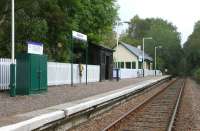
John Furnevel 27/09/2005
This single track 1050 ft tunnel is the longest on the line. It is immediately east of Borrodale Viaduct and west of Beasdale station.
...
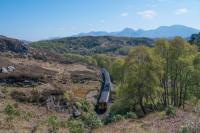
Ewan Crawford 02/05/2017
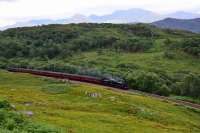
John Gray 03/08/2016
This is a broad single arch mass concrete viaduct. It is 127.5 ft long, thought to be the longest such bridge when built. It is 86 ft high and approached by 20 ft arches at either end. The bridge has dressed stone additions and parapets, added for the benefit of the landowners at Arisaig House and Borrodale House (which are to the south). The bridge crosses the very deep chasm of the ...
More details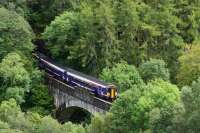
John Gray 02/08/2017
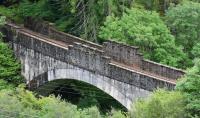
John Gray 02/08/2017
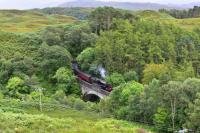
John Gray 02/08/2017
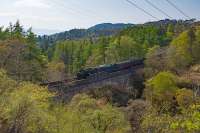
Ewan Crawford 02/05/2017
This single track three arch viaduct crosses the Brunery Burn east of Arisaig. The central arch, 49 ft, crosses the burn and has the widest span. Those to the sides are of 20 ft.
...
This is a two platform station with a passing loop. The original station buildings still stand, the larger on the down (Mallaig bound) platform. The signal box (closed in 1983 and 'B' listed) still stands at the Fort William end of the station on the northbound platform. The station is to the north of the village of Arisaig.
...
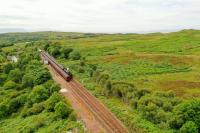
John Gray 15/07/2021
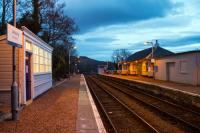
Ewan Crawford 13/12/2018
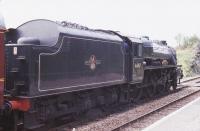
John Gray //
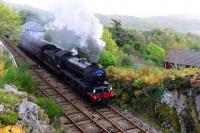
John Gray 23/10/2015
This level crossing is between Arisaig (to the south) and Morar. The minor road from Arisaig to Scamadale crosses the line. To the south the line runs on solid ground, but to the north of the crossing it strikes north across extremely deep bog for about a mile and a half before reaching solid ground again.
...
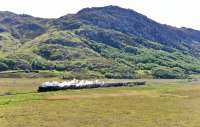
John Gray 25/05/2016
This is a four arch single track mass concrete viaduct crossing the River Morar at the Falls of Morar. The viaduct is south of Morar station.
...
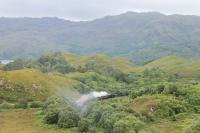
Mark Bartlett 01/08/2018
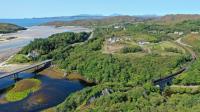
John Gray 26/08/2021
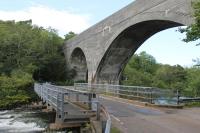
Mark Bartlett 26/07/2018
This is a single platform station which retains its single storey station building. The building, having been disused and in poor condition, was repaired and has been used for a variety of purposes including a pottery and bakery.
...
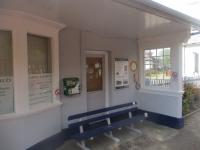
David Bosher 08/09/2022
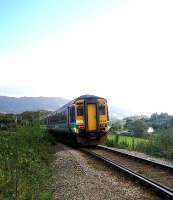
John Furnevel /09/2005
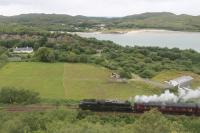
Mark Bartlett 01/08/2018
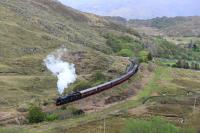
John Gray 23/05/2015
This was a single road locomotive shed on the west (sea) side of Mallaig station, about in line with the end of the platform. It was approached from the south and had a turntable on its west side by the sea. A line extended from the south to the pier, running between the station and the locomotive shed.
...
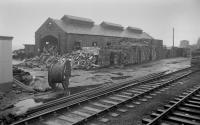
...
Bill Roberton //1973
This is a two faced island platform terminus on the western seaboard of Scotland. Nearby is the Caledonian MacBrayne pier for Armadale Pier in Skye. A number of locations are served from Mallaig Pier. The station building is at the north (buffer) end of the station. It is of two storeys and in house style. The terminus building lost its glazed platform canopy in 1977. A sea wall ...
More details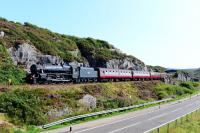
...
John Gray 26/08/2021
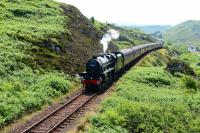
John Gray 13/06/2023
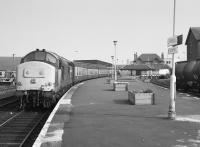
Bill Roberton //1985
Mallaig Pier is the port for Armadale Pier on Skye, Lochboisdale Pier on South Uist, Inverie Pier in Knoydart and the Small Isles; Eigg Pier, Muck Pier, Rum Pier and Canna Harbour. It is located on the Sound of Sleat.
...
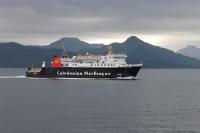
Mark Bartlett 27/07/2018
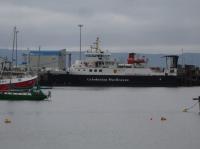
David Pesterfield 18/06/2013
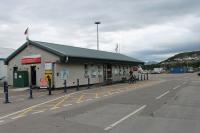
Mark Bartlett 27/07/2018
Pulp Mill
This ground frame controlled access to the Scottish Pulp and Paper Mills at Corpach from the Mallaig Extension (West Highland Railway).
...

Ewan Crawford 28/05/2006
This railway served pulp and paper mill was important to the survival of the West Highland Railway giving rise to much purely Scottish rail traffic. Timber, paper, and oil were carried by rail.
...
Books










